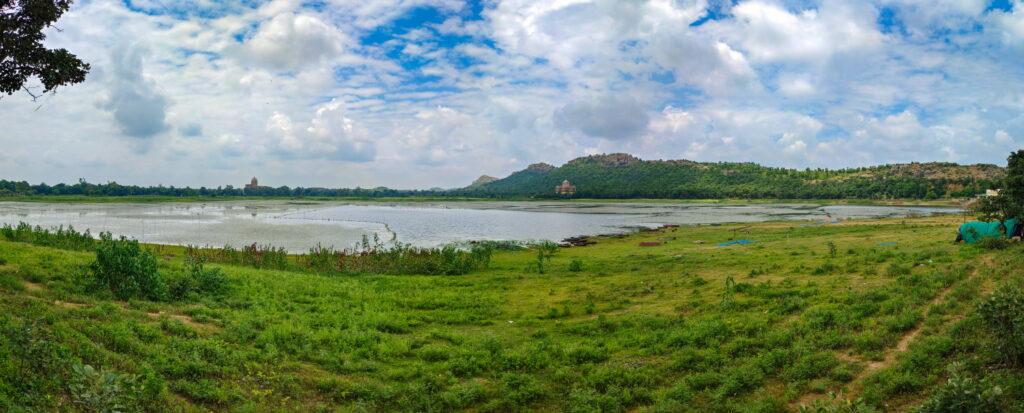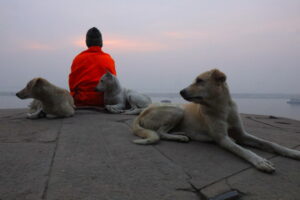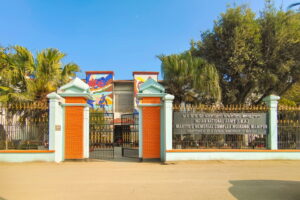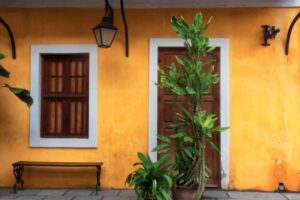Madhya Pradesh has many places that are yet to be explored fully by travellers. Dhubela is one such place. If you are a history lover, then you will certainly love Dhubela. It was the eyewitness of many chronological events that are very important in the history of the Bundelkhand region and India as well. Yet, they are hardly mentioned in our history textbooks. So, next time you visit Khajuraho, Panna or Orchha, do not forget to visit Dhubela as well. You will definitely love the place.
History of Dhubela
Dhubela is a small place near Chhatarpur in Madhya Pradesh. Dhubela was once the residence of Maharaja Chhatrasal, a brave warrior from Bundelkhand who fought against the army of Mughal Emperor Aurangzeb. The history of Dhubela came into the limelight when Chhatrasal Bundela made his palace there and started reigning Bundelkhand for nearly a century. His successors are still living in Chhatarpur. The palace in Dhubela is now converted into a museum. There are several other monuments and palaces that can make Dhubela an interesting place to visit if you want to know more about a proud chapter of the history of Bundelkhand.
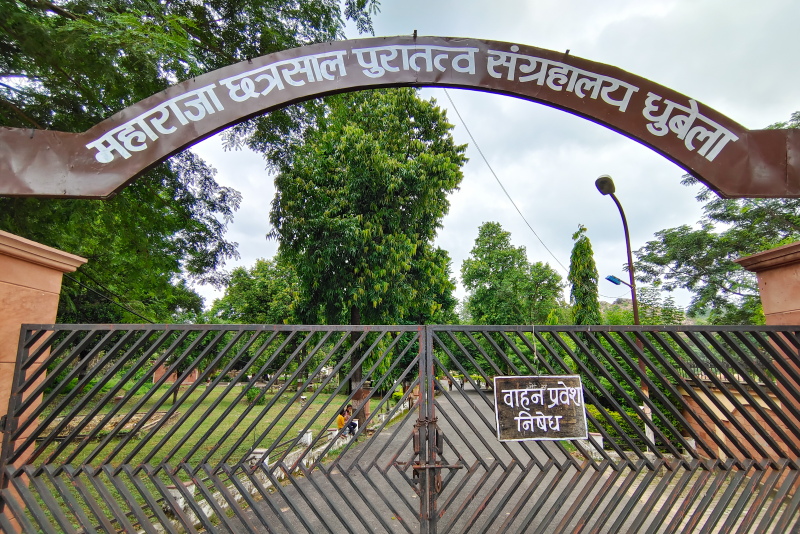
Maharaja Chhatrasal
Maharaja Chhatrasal is a prominent name in the history of the Bundelkhand region. He was a brave warrior who fought with the Mughals to protect his land and his people. He was the son of Champat Rai (a descendant of Rudra Pratap Singh from Orchha) and Rani Sarandha, both of whom were experts in guerilla warfare. Champat Rai was a follower and friend of King Bir Singh Bundela from Orccha. Chhatrasal was born in Morpariya near Jhansi. At that time, his father, Champat Rai and his mother, Sarandha, were living a life of rebellion in the forests of Orchha, fighting against the army of Aurangzeb. Chhatrasal was their fourth son.
After training in weaponry and war tactics at his uncle’s house, Chhatrasal started fighting against the Mughals in guerilla warfare and acquiring their lands. Within a few years, he had succeeded in conquering a large stretch of land between Chitrakoot and Panna on the east and Gwalior on the west. He built a palace in Dhubela and established his kingdom there. He successfully kept the Mughals away from his kingdom for the next few decades.
In a last desperate attempt by the Mughals, the famous Pathan warrior Muhammad Khan Bhangash, the commander of the Mughal Army, attacked Bundelkhand with his soldiers in 1730. Chhatrasal sought help from Peshwa Bajirao I to fight the Mughals. Peshwa Bajirao responded to his request and helped him to achieve victory over the Mughals again. As a sign of gratitude, He gave a large part of his kingdom and the hands of his daughter Mastani to the Peshwa Bajirao. Maharaja Chhatrasal passed away in 1731.
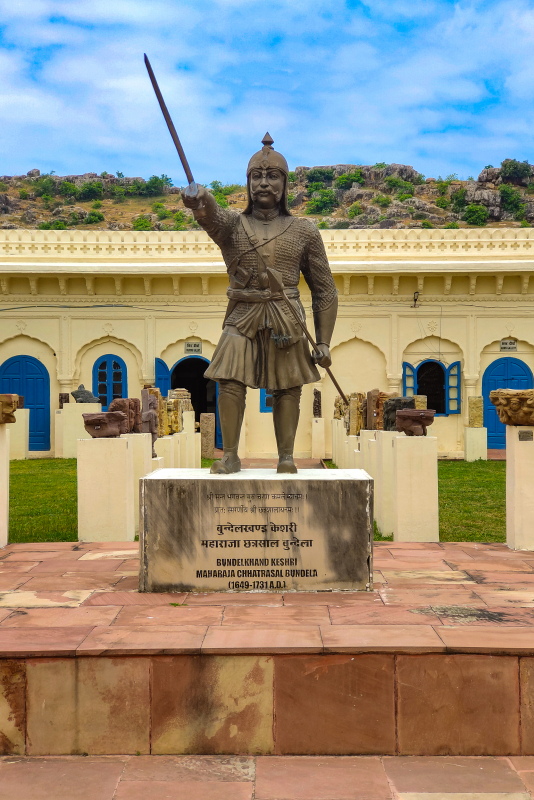
Princess Mastani
Mastani was the daughter of Maharaja Chhatrasal and Ruhani Bai, a concubine in Maharaja’s court. She got married to Peshwa Bajirao I in 1730 as a sign of gratitude from the Maharaja towards Bajirao. Matani was trained in sword fighting and other weaponeries. Like her father, she was a follower of Pranami Sampradaya, a Hindu sect on the Bhakti worship of Sri Krishna. She also followed the Shia Islam like her mother.
When Mastani married Bajirao was shifted to Pune, it raised a lot of problems as Bajirao was already married, and monogamy was an accepted rule there. The religious Brahmin family of the Peshwa Bajirao also had issues with the maternal origin of Mastani. Although initially, Mastani stayed in Bajirao’s palace of Shaniwar Wada in Pune, later, a separate palace was built for Mastani by Bajirao at Kothrud in 1734.
Mastani and Bajirao had a son named Krishna Rao at birth, who was later named Shamser Bahadur. Mastani died in 1740 after the death of Bajirao. The controversial life of Mastani and her relationship with Bajirao has been well adapted in different novels and movies like the recent Bollywood movie Bajirao Mastani.
How to reach
Dhubela is situated near Chhatarpur town in Madhya Pradesh. Chhatarpur is 15 kilometres from Dhubela. Chhatarpur is well connected by road and rail with other parts of Madhya Pradesh. We went to Dhubela on our way to Orchha from Khajuraho.
Dhubela comes on the Khajuraho-Jhansi highway. It is approximately 60 kilometres from Khajuraho and takes a little more than an hour to reach. You will get buses from Khajuraho to Chhatarpur and then take a cab to Dhubela from Chhatarpur.
If you are coming by train, then get down to Maharaja Chhatrasal Station Chhatarpur (code – MCSC) and ride a cab to Dhubela Chhatrasal Museum. Khajuraho Airport is the nearest airport to Chhatarpur.
Where to stay
There are not many options to stay in Dhubela. Dhubela Resort is a nice property close to all the attractions. You can also stay in Chhatarpur town. Hotel Prime Residency is a decent option to stay in Chhatarpur. You can also visit Dhubela on a day trip from Khajuraho or Panna.
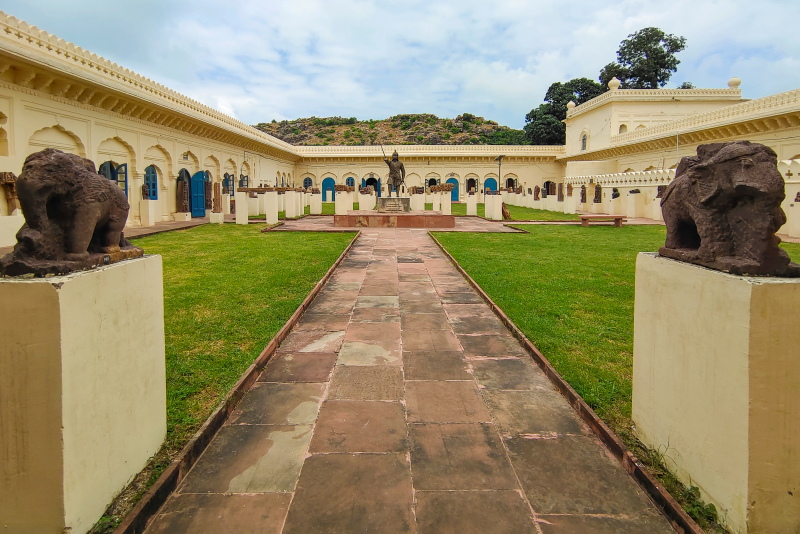
Things to visit
Chhatrasal Museum
Chhatrasal Museum was originally the residence of the Maharaja. Located beside Dhubela Lake, this palace is a two-story building. Since 1955, the palace has been converted to Maharaja Chhatrasal Archaeological Museum.
The ground floor has two galleries. These two galleries have collections of inscriptions, Jain statues and sculptures. The Jain sculptures are from the Chandella and Kalachuri periods collected from Bundelkhand and Baghelkhand.
The upper floor has five galleries and a central courtyard. The central courtyard is an open art gallery with many sculptures of Hindu gods and goddesses collected from different parts of Bundelkhand and Baghelkhand. A large statue of Maharaja Chhatrasal is also placed in the central courtyard. The five galleries are – the Shiva Gallery, Vaishnava Gallery, Fine Art Gallery, Painting Gallery and Arms Gallery.
Shiva and Vaishnava Galleries contain sculptures of Lord Shiva and Lord Vishnu and their associates. The Fine Art Gallery has objects such as ivory, glass, wood, metal, and terracotta figures. The towel of Maharaja Chhatrasala and the clothes of the Reva & Charkhari families are also noteworthy objects in this gallery.
Entry time: 10 am – 5 pm (closed on Mondays and gazetted holidays)
Entry fee:
- There is no entry fee for below 15 years.
- Above 15 years: Indian – 20, Foreigner – 400, Photography – 250, Videography – 400
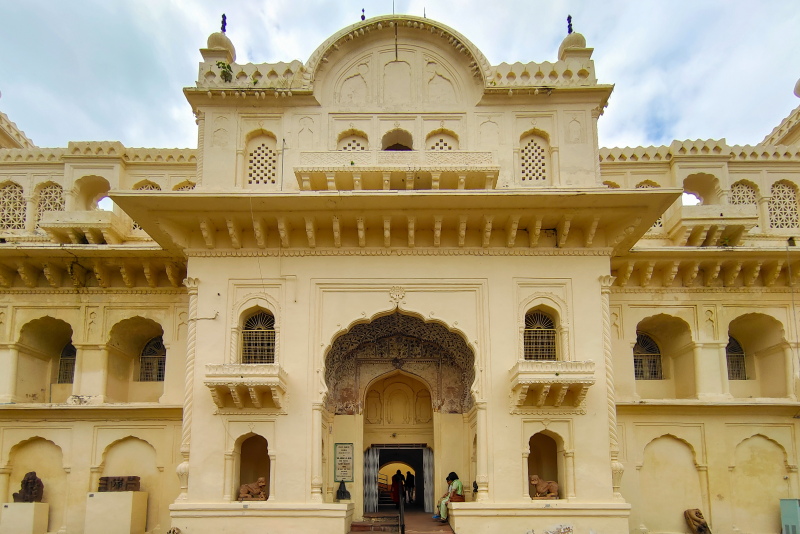
Mastani Mahal
There is a Mastani Mahal in Pune on the premises of Raja Dinkar Kelkar Museum that holds things collected from the original palace in Kothrud built by Bajirao for his love Masatani Bai. But do you know that there is another Mastani Mahal in Dhubela? Well, Maharaja Chhatrasal built it for his beloved daughter Mastani beside his palace.
Mastani Mahal is also a two-storied building. Simple in design with a central courtyard and rooms surrounding the courtyard. The Mastani Mahal is in ruins, but as it is located inside the same complex as the Chhatrasal Museum, it is accessible, and you can go to the upper floor as well. Click some pictures and come down.
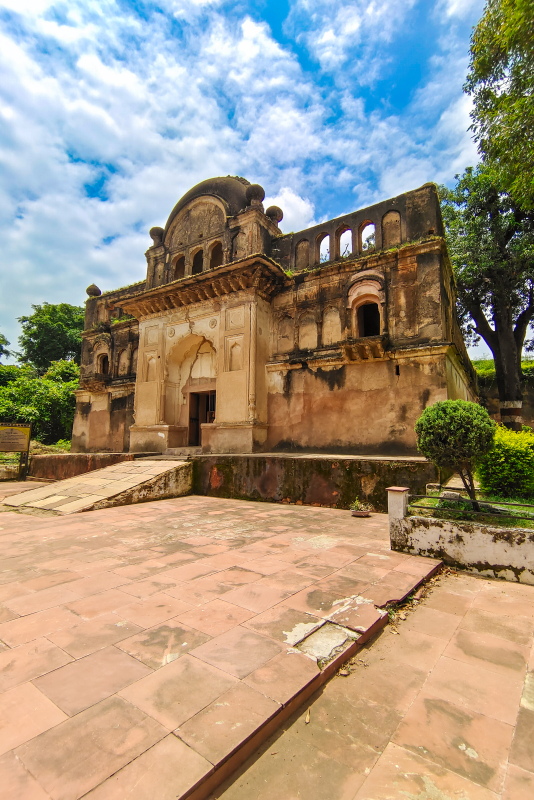
Cenotaph of Kamalapati
Kamalapati was the queen of Dhubela and first wife of Maharaja Chhatrasal. Her cenotaph was built near the hill. The Cenotaph is a large octagonal structure with a central dome. An example of the beautiful Bundelkhand architecture style. There are 180 paintings made in fresco style inside the cenotaph. You can get a good view of the surroundings from the upper levels.
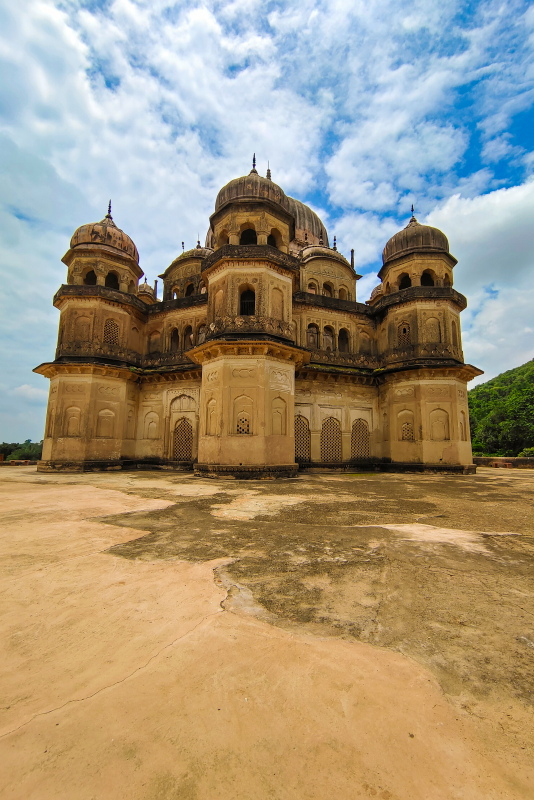
Cenotaph of Chhatrasal
The cenotaph of Maharaja Chhatrasal is a huge octagonal structure on the banks of Dhubela Lake. The central tower is dome-shaped. This cenotaph is undoubtedly the finest architecture in Dhubela. Peshwa Bajirao built it after the death of Maharaja Chhatrasal. Bajirao started the construction in 1733, but he could not complete it. Raja Bakhatwali Singh of Shahagarh completed the upper portion. The samadhi of Maharaja Chhatrasal is in the centre of the structure, with an ambulatory around it. There are beautiful fresco-style paintings inside this cenotaph as well.
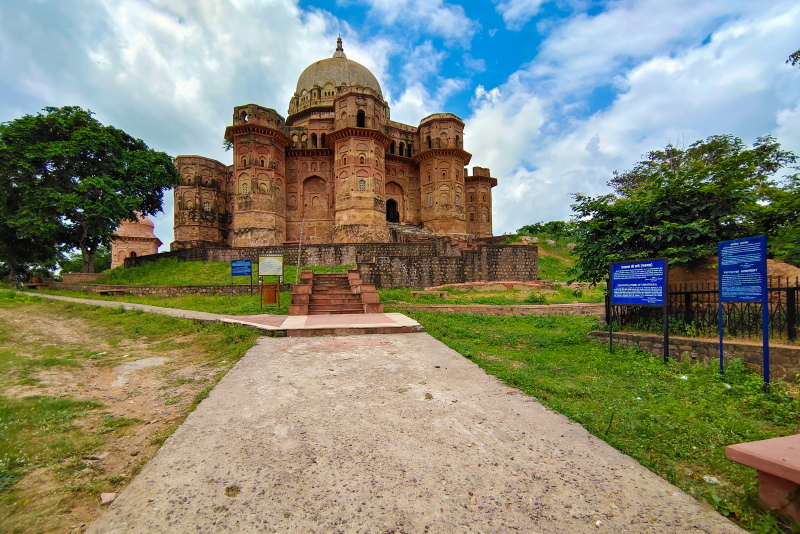
Cenotaph of the horse of Chhatrasal
Bhalebhai was the name of the brave horse of Maharaja Chhatrasal. It was said that Maharaja loved his horse so much that after the death of Maharaja, the horse also died. The cenotaph of the horse is beside the cenotaph of the Maharaja Chhatrasal. Do not miss this small cenotaph of Bhalebhai if you are visiting the cenotaph of Chhatrasal.
Sheetal Garhi
A fortress on the top of a hill constructed by Deewan Keerat Singh, grandson of Maharaja Chhatrasal. This fortress was built as a summer palace to escape the summer heat. It is also assumed that the fortress was built for security and surveillance purposes. The whole region can be watched in a bird’s eye view from this fortress.
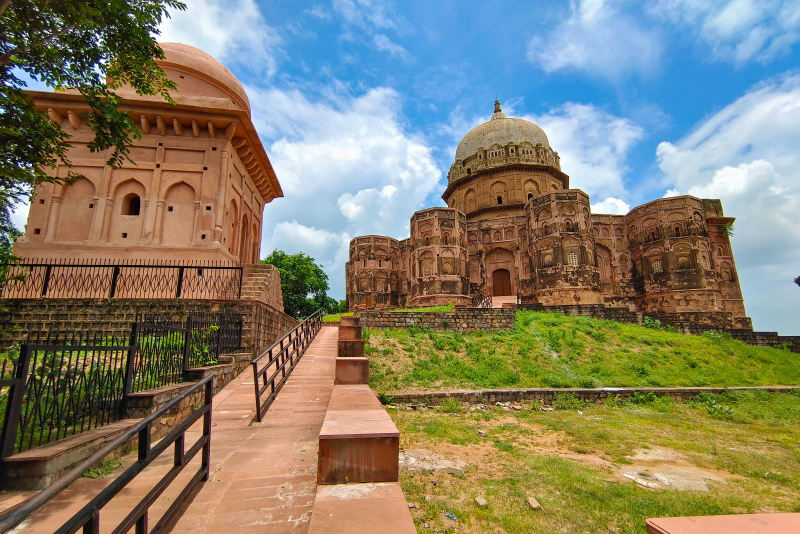
Hriday Shah Palace
Hriday Shah was the son of Maharaja Chhatrasal. This palace was built for him. But the palace is in ruins now. This large palace needs restoration so that visitors can enter the palace. At present, you can only see it from outside.
Maheba Gate
It is a twin gate connected by thick walls with a passage inside for guards to rest. Chhatrasal built this gate to connect Maheba and Mau Sahania villages. This gate is also a showcase of beautiful Bundeli architecture. You can click some photos standing on the upper part of the gate.

Dhubela Lake
Dhubela Lake is a freshwater lake surrounding which all the monuments in Dhubela were built. The panoramic view of the lake is really beautiful. The roads are constructed circling the lake, and sitting areas are made so that tourists can enjoy the view of the lake.
Other places to visit
- Tomb of Mahabali Teli
- Ganesh Temple
- Shri Krishna Temple
- Badal Mahal
- Chausath Yogini Temple
- Tomb of Savai Singh
- Tindani Gate
Things to remember
- Although all the monuments are within a 3-4 km radius, exploring them all takes time. So, have time on your hands while visiting them. You will easily spend 3-4 hours there visiting all the monuments.
- Look for a local guide, or else you will miss a few monuments. You can ask the ASI people in the Chhatrasal Museum, they may help you find a guide.
- The place is not very popular in the tourist circuit. So, you will not find many hotels or restaurants around.
- There are no cafes or restaurants near the Chhatrasal Museum, which is the main attraction in Dhubela. Only a couple of small shacks are outside the main gate. So, carry some snacks and water with you. You will find a restaurant in Chhatarpur and can have your lunch there.
- There is a nice collection of concave and convex mirrors at the Painting Gallery inside the Chhatrasal Museum. You will love to spend some time there with your family. So, do not miss it.
